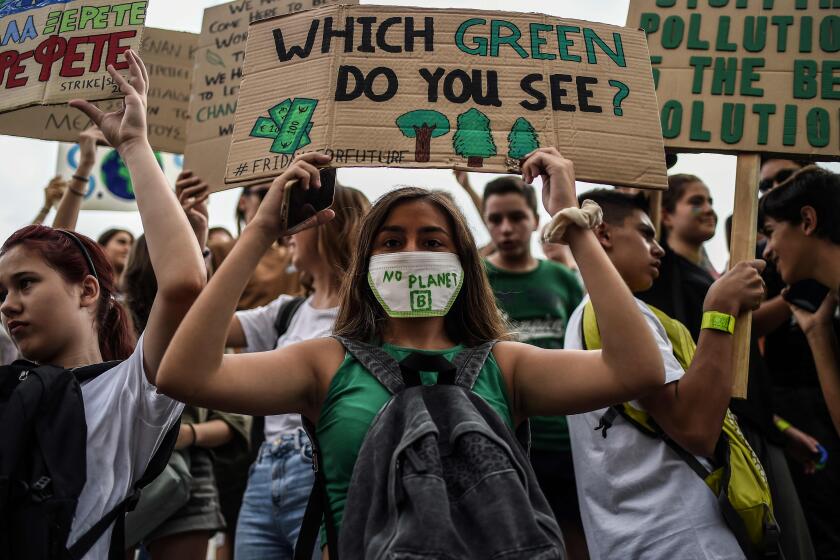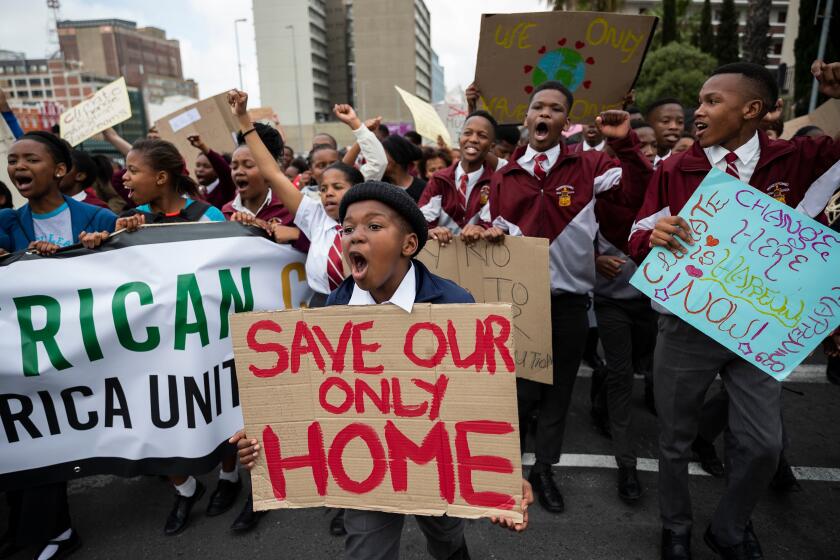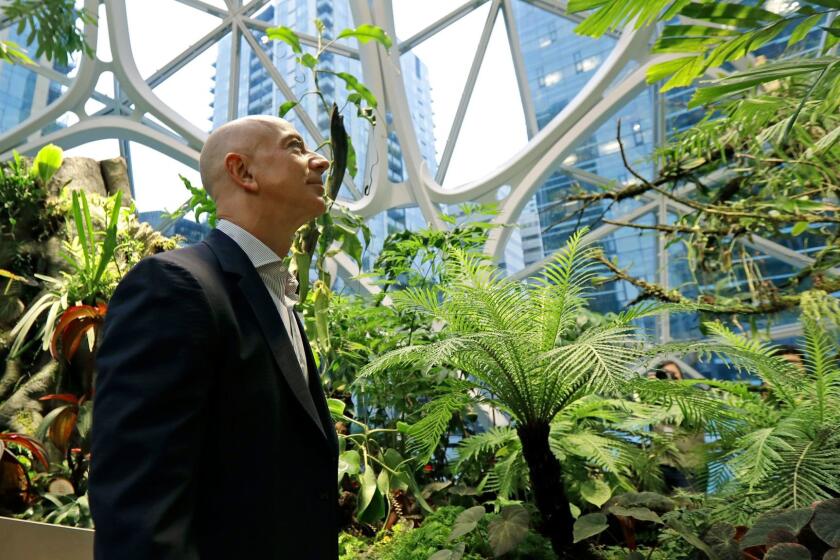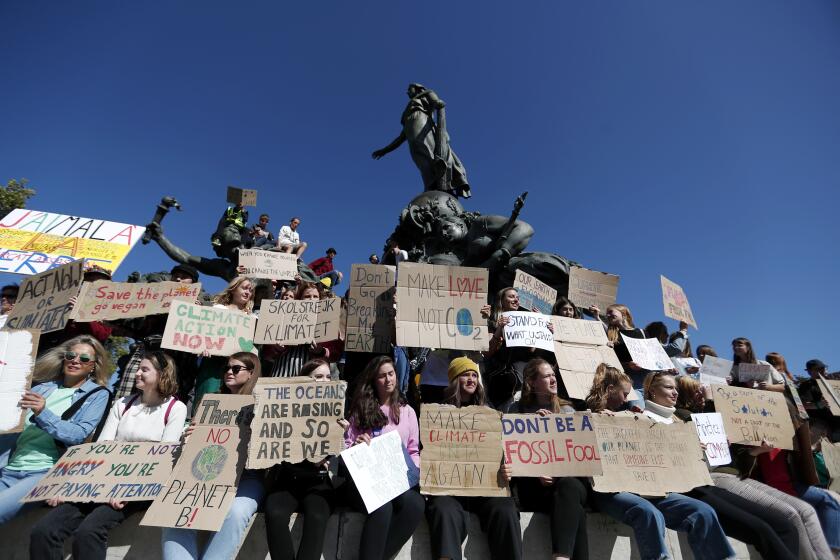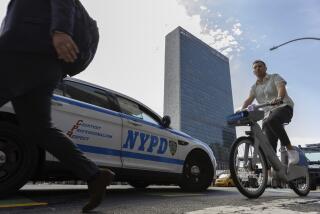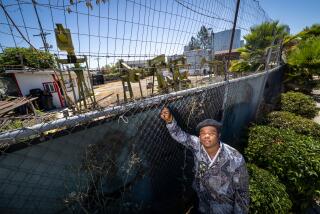Q&A: What is the U.N. climate change summit?
Enough with the platitudes — it’s time for world leaders to take concrete actions to avert a catastrophic heating of the planet.
That’s the message United Nations Secretary-General Antonio Guterres has delivered to the heads of state gathering in New York for a summit aimed at galvanizing action to slow global warming. Officials from dozens of countries are expected to take to the stage and reveal plans to step up their efforts during the day-long meeting on Monday, which will be accompanied by a variety of climate-related events.
Here’s a look at what the summit is all about.
Why is this summit happening?
The Climate Action Summit is an attempt to kick-start the global campaign against climate change.
It comes at a critical juncture following the 2015 Paris climate accord, an unprecedented international agreement to reduce greenhouse gas emissions. Participating countries are supposed to continually ratchet down their emissions, and their first plans for doing so must be ironed out next year.
But most nations are moving far too slowly, and summit organizers hope they can get them back on track. To provide inspiration, a succession of world leaders will take the stage and announce concrete steps they will take to avoid disastrous levels of warming. How far those plans go will be an important signal of what to expect in the coming years.
Young people see climate change as a profound injustice and an existential threat. But they believe the world can still do something about it.
What exactly will be happening?
About 60 world leaders will have the opportunity to speak, and many will announce more aggressive goals for cutting planet-warming pollution. Among those expected to appear are French President Emmanuel Macron, Indian Prime Minister Narendra Modi and dozens of other heads of state.
A number of small- and medium-sized countries will probably increase their commitments, said David Waskow, director of the International Climate Initiative at the World Resources Institute think tank. “What’s not clear is the extent to which major emitters are going to make those announcements.”
What is the U.N. asking for?
Guterres has told world leaders to “bring plans, not speeches,” and has offered stage time only to those with the most ambitious and credible targets.
He also asked participating nations to support an end to fossil fuel subsidies, stop building new coal-fired power plants after 2020 and commit to getting to net zero carbon emissions by 2050.
That list has rankled countries with plans to open new coal plants, such as Japan, South Korea and South Africa. Their leaders were not among those invited to speak, the Financial Times reported.
Rachel Kyte, a special representative of the U.N. secretary-general who is chief executive of the nonprofit Sustainable Energy for All, said Guterres’ conditions for participation in the summit are intended to send a clear message: “We are no longer in a generic, goal-setting mode. We are in the implementation of the decarbonization of the economy.”
Walkouts are taking place worldwide Friday calling for action on climate change in a youth-led movement for renewable energy and carbon-neutral goals.
Why is this happening now?
Because the world is running out of time to get the Paris pact on track and contain the damage from climate change.
The 2015 Paris agreement aims to keep global warming “well below” 2 degrees Celsius compared with preindustrial levels, and within 1.5 degrees if possible, in order to avert the most devastating effects of climate change.
But the national targets agreed to in Paris fall significantly short of that goal. Human activity has already warmed the planet by about 1 degree Celsius, and fulfilling only the Paris commitments is likely to result in a temperature increase of 3 degrees — far beyond what scientists consider tolerable to humanity.
Meanwhile, the effects of global warming are hitting harder and sooner than expected. People are increasingly experiencing the consequences at their doorsteps, including more intense hurricanes and wildfires, more extreme heat waves, rising sea levels and diminishing air quality.
The U.N.’s Intergovernmental Panel on Climate Change has warned of devastating consequences without “far-reaching and unprecedented changes” to slash emissions in little more than a decade. Avoiding calamity will require drastic, large-scale action to cut emissions 45% by 2030.
On Friday, 5,000 youth-led demonstrations in 156 countries — 100-plus in California — will demand government action to end reliance on fossil fuels.
Is the U.S. participating?
President Trump has disavowed the Paris agreement and intends to withdraw once the U.S. is eligible to do so in 2020. He is not among the heads of state scheduled to speak at Monday’s summit, despite plans to attend the U.N. General Assembly meeting the next day. But U.N. officials said they expect a high-level U.S. official and delegation to attend.
Though Trump will be absent, his moves to undermine climate science and roll back emissions reductions are casting a shadow over the proceedings.
With its embrace of fossil fuel-friendly policies, the Trump administration has become something of a spoiler in the international negotiations, in league with oil states such as Saudi Arabia and Kuwait in arguing against climate science and multilateral action, said Michael Wara, director of the Climate and Energy Policy Program at Stanford University.
Trump’s stance is frustrating the process of “moving from big, lofty ideas about what should happen” to “people having to spell out the details of what they’re going to do,” Wara said. “The U.S. has said, ‘This is not a priority for us,’ and that makes it very hard for other leaders — especially leaders whose countries are in some degree in competition with the United States — to take aggressive action.”
Amazon workers have spent this year urging CEO Jeff Bezos take more urgent steps on climate change. They’re a key reason Amazon’s environmental footprint is under scrutiny.
Will any other Americans be taking part?
California is expected to have a strong presence at the summit and its related events, with appearances by Gov. Gavin Newsom and other state leaders who are battling the Trump administration over auto emissions standards and a host of other environmental protections the president is seeking to undo.
California won’t be alone. Julie Cerqueira, executive director of the U.S. Climate Alliance, a coalition of state leaders working to uphold the Paris agreement, said at least six governors will be at the summit to assure the world “that we in the United States, at the state level, remain committed to upholding the Paris agreement.”
“What we don’t want is for people to use the United States as an excuse for backsliding,” she said. “These states are fighting as hard as they can to advance a very bold climate agenda.”
Cities, states and business leaders will also play a key role in rallying for tougher climate action.
How will we know if the summit is a success?
If the summit generates enough tangible commitments from major international players, it could provide momentum for negotiations under the U.N. Framework Convention on Climate Change, where the details of nations’ plans to reduce more emissions must be hammered out next year.
Experts are waiting to see whether China, India, the European Union or any other major economies will counter the Trump administration’s efforts to unravel climate action by announcing significant plans to slash their own emissions.
Luis Alfonso de Alba, Guterres’ special envoy for the summit, told reporters he was “very confident” that China would come with a “clear commitment” to enhance its climate plans.
What other obstacles loom?
The political winds on climate action have changed dramatically thanks to an inward, nationalistic shift in a number of key countries, such as the United States and Brazil, whose actions will be critical in determining the fate of our warming planet.
Worries about the global economy, including troubling signs in China and Europe — two of the most important players in global climate negotiations — could also weigh on the process by shifting government priorities away from lofty long-term goals to more pressing short-term concerns.
Today’s climate protests reinforce what we already know: The world must act quickly and radically to upend how we create and consume energy.
What else is going on around the summit?
There are a plethora of climate-related meetings, demonstrations and other side events in the days before and after, including public protests and speeches from scientists, executives and nonprofit organizations about the effects of climate change and actions needed to confront it.
On Friday, activists are convening a global climate strike, walking out of schools and workplaces to demand government action. They will join Swedish teenager Greta Thunberg and other youth activists in the Fridays for Future movement who have been skipping school every Friday to demand more aggressive steps from world leaders.
On Saturday, the U.N. is hosting a Youth Climate Summit, where hundreds of young people will discuss how to speed the transition from fossil fuels to renewable energy.
Other pre-summit activities include meetings among governments, businesses and nonprofits on issues such as carbon pricing, adapting to natural disasters and other climate-related risks, and cleaning up hard-to-change industries such as shipping and aviation.
Are there any hopeful signs?
Smaller nations such as Chile, Costa Rica and New Zealand are expected to outline plans to dramatically cut emissions. Recent opinion polls show increasing concern about climate change and rising support for government action. Electric vehicles and renewable energy technologies are advancing.
The expanding reach of youth activism is another reason to remain optimistic, said Rob Jackson, an environmental scientist at Stanford who chairs the Global Carbon Project.
“Our young people are demanding action. They have no patience for caution,” he said. “And I can’t blame them.”
